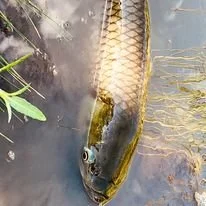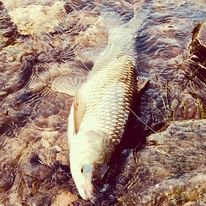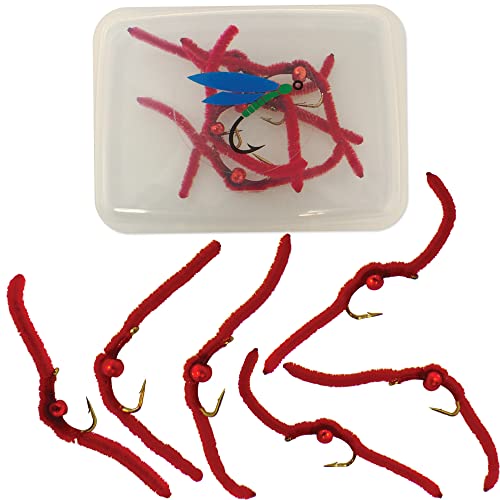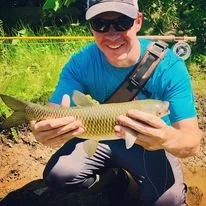Grass Carp on the Fly
My largest fish on the fly to date. An unknown weight grass carp next to my 8 foot 4WT rod.
Grass carp, also known as white amur, are a species of freshwater fish that are often found in large rivers and lakes. They can be challenging to catch on the fly, but with the right techniques, locations, and gear, it is possible to successfully land these elusive fish.
First, it's important to understand the feeding habits of grass carp. They are primarily herbivorous, feeding on aquatic plants and algae. This means that fly patterns that mimic these types of food sources, such as green San Juans and nymphs are likely to be effective. Additionally, grass carp are often found in shallow, weedy areas, so a stealthy approach and a long, accurate cast are crucial.
Locations to target grass carp on the fly include large rivers with abundant vegetation, such as the Mississippi River and the Missouri River, as well as man-made lakes and impoundments. These fish are found in many other countries such as Asia, Europe, and Africa.
When it comes to gear and tackle, for the heavy vegetation, fast water, or larger size grasser, a 9-weight rod and reel with a floating line is a good starting point. A heavy leader and tippet are also important, as grass carp are known for their strong runs and tough mouths. Finally, a large net will make landing these fish much easier.
They really can vary however in fight intensity. I’ve personally caught a handful that simply swam around as if they were hoping you’d forgot they took your fly. For that reason, I’ve definitely been successful bringing them to hand with a 3WT glass combo too.
A few different fly patterns for catching grass carp on the fly include:
The first pattern to try would be a large streamer or bugger pattern. These flies can be fished slowly to target the grass carp perusing the bottom and in deeper parts of the water.
Another great pattern to use is a worm like the San Juan or Carp Assassin pattern. A foam ant or rubber legged hopper pattern can produce as well. These flies mimic terrestrial insects that often fall into the water, making them a great choice for targeting grass carp in shallow water, feeding on top or near the surface.
Another great fly pattern for grass carp is a stonefly pattern. These flies mimic the large stoneflies that often fall into the water, making them a great choice for targeting grass carp in the shallow water.
It is important to note that with any fly fishing for grass carp it is important to use a strong tippet and a stout rod to handle the power of these fish. It is also important to be aware of the regulations and restrictions on fishing for grass carp as they are considered an invasive species in many areas.
When it comes to leaders, a 9-foot, tapered leader is a good choice for grass carp fly fishing. This leader will help turn over your flies and provide a delicate presentation. A leader made from fluorocarbon is a good option as it is nearly invisible underwater, giving you a stealthy presentation.
Finally, when it comes to tippet, again a fluorocarbon tippet is a good choice for grass carp fly fishing. This material is strong and abrasion resistant, making it well suited for fishing in heavy cover. A tippet of 0X to 2X is recommended as grass carp are big fish, and you will need a sturdy tippet to land them.
It's also important to note that fishing for grass carp is quite different from traditional fly fishing. The fish can be quite elusive, and a stealthy approach is necessary.
This one had a gash on the side that healed over time.
In summary, to catch grass carp on the fly, you should use fly patterns that mimic their food sources, target areas with abundant vegetation, and use the right gear including a 9-weight rod and reel, heavy leader and tippet, and a large net. Remember to approach the fish stealthily and use a sturdy rod and reel. Happy fishing!











